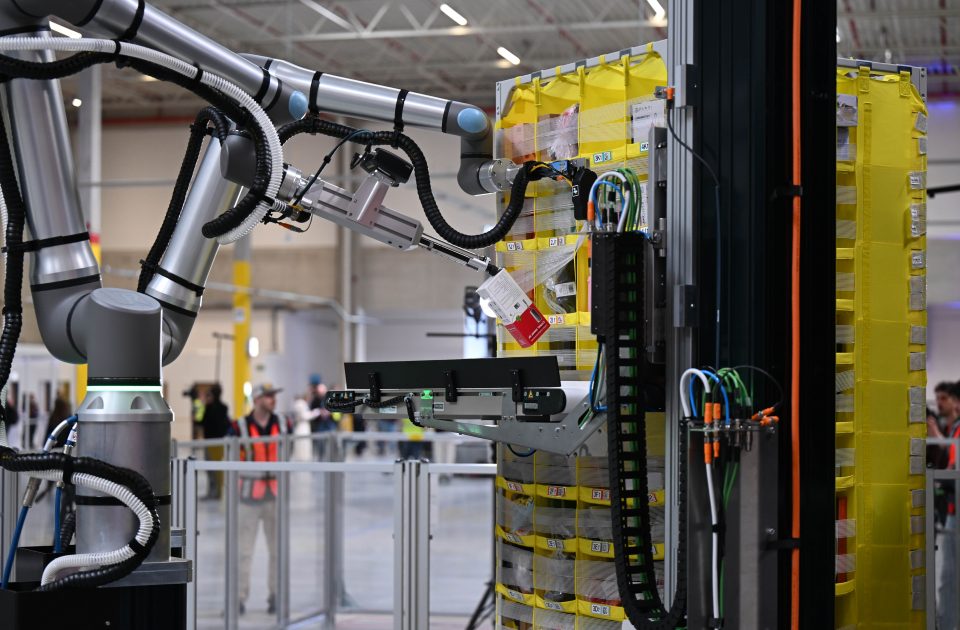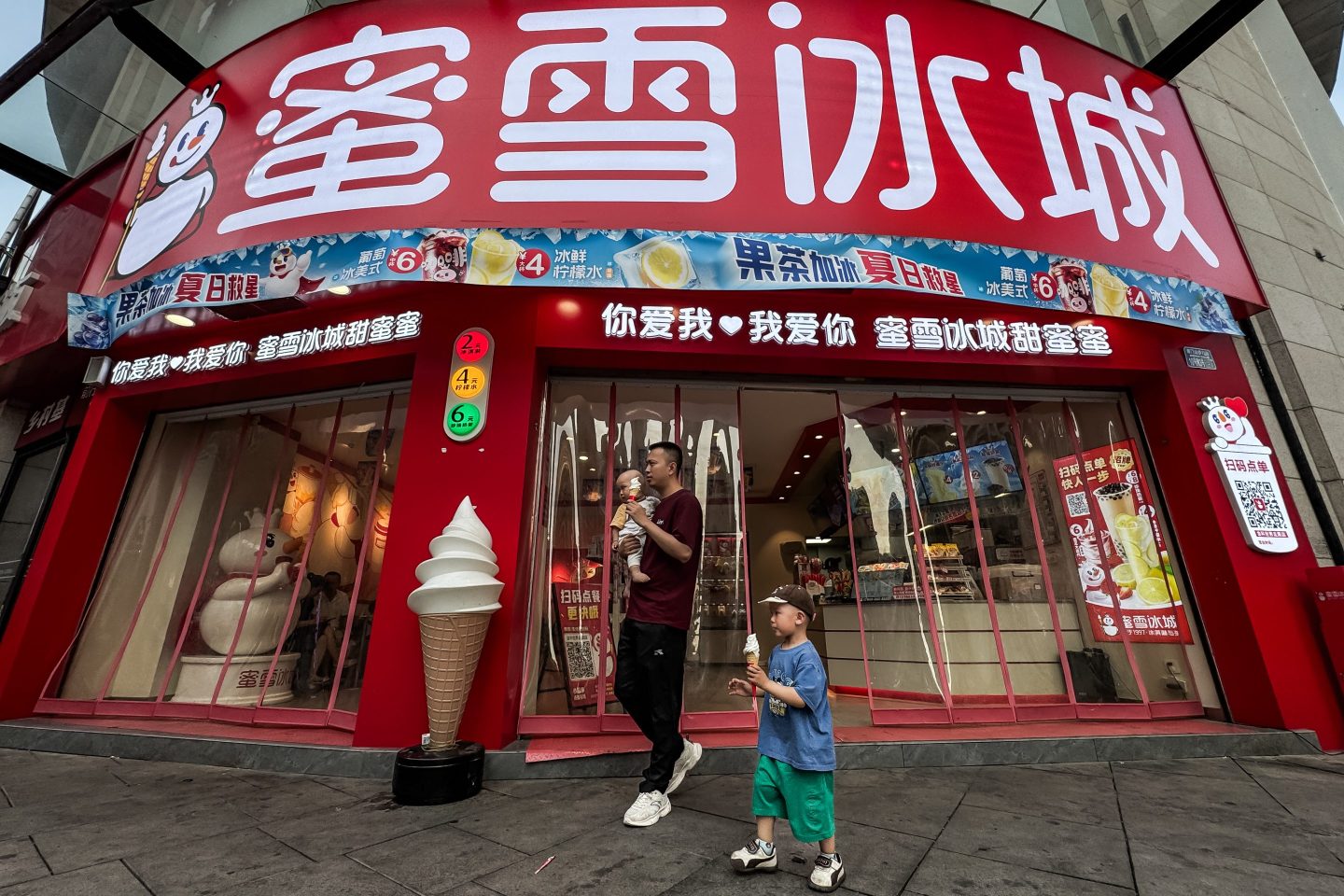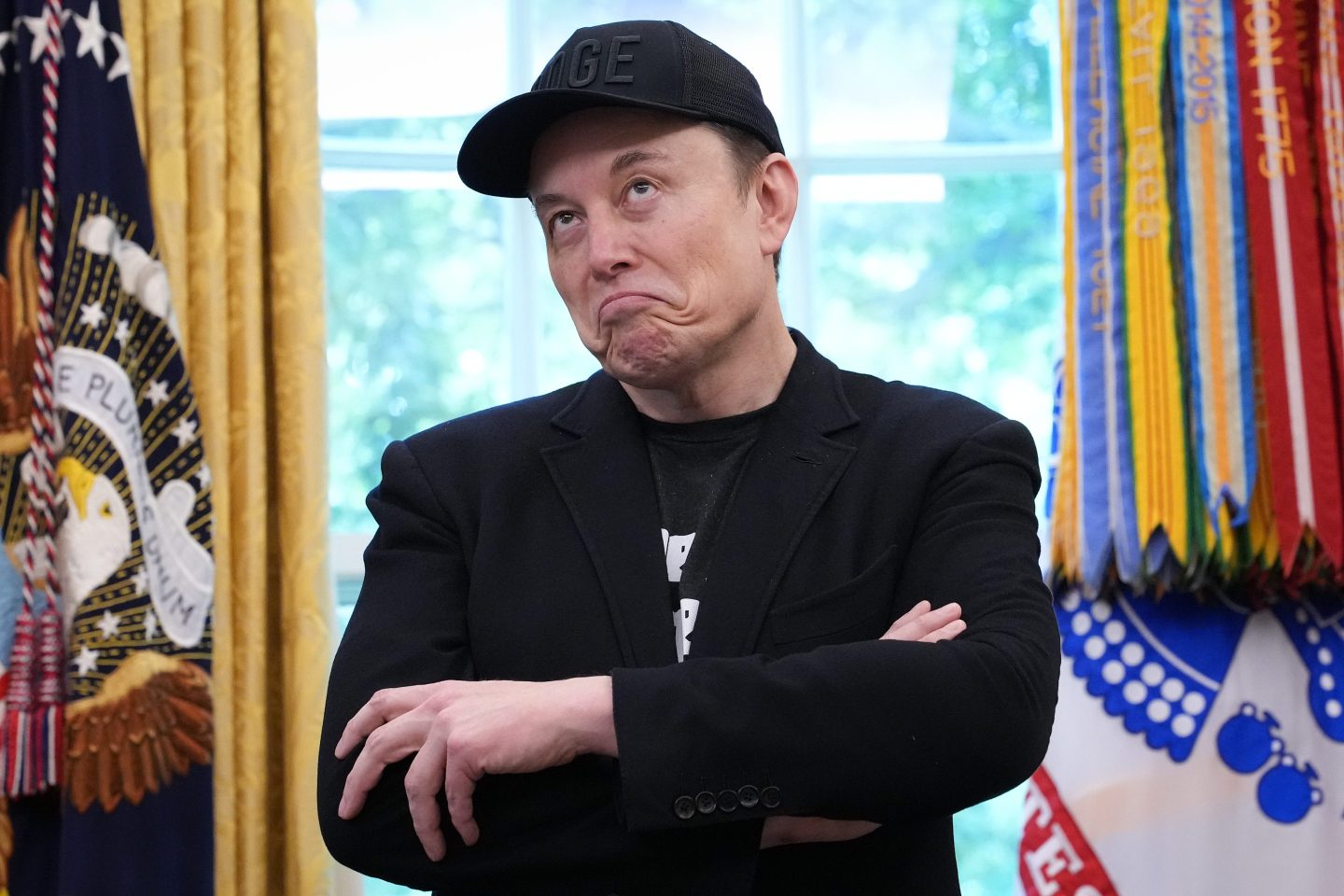At a press event last year, Amazon Robotics chief technologist Tye Brady told Fortune that the idea that there’s a battle of robots versus humans inside Amazon’s warehouse network is a “myth.”
“We build our machines to extend human capacity,” he said, sharing a vision of so-called collaborative robots that work alongside humans instead of fully replacing them.
Around six months later, during an onstage interview at the Fortune Brainstorm AI conference in London, Brady told me about Amazon’s first robot “with a sense of touch.” Called Vulcan, the robotic system can do much of the work performed by human staffers in two of the most common roles in Amazon warehouses—picking and stowing. For now, the Vulcan system is active only in a couple of facilities and just handles items positioned on the top and bottom shelves of Amazon’s fourshelf mobile shelving units, while humans pick and stow the rest.
During that conversation, I probed Brady about the robot-human dynamic. Amazon is not just any employer; it’s the second-biggest corporate employer in the U.S., and one whose operational efficiencies many corporations would love to emulate. So I asked him whether a hypothetical Amazon warehouse with 1,000 employees today might employ fewer than 1,000 employees in the years to come as Vulcan’s scope of work, accompanied by complementary Amazon robotic systems, grows. No, he insisted. Instead, such a hypothetical warehouse “could have a thousand [employees] or more.”
Not less? I pushed. “Not less,” he said, describing a virtuous flywheel of more robots leading to more orders processed, leading to more sales per employee for a given facility, but still more edge cases or errors requiring human intervention—in addition to roles for humans fixing and managing the robots themselves, which pay better than the average role.
So what then to make of a New York Times investigation into Amazon’s robotics ambitions, which cited internal plans to eventually automate around 75% of operations? The memos suggested that the company’s fleet of robots might eliminate the need to hire for some 600,000 future jobs. (An Amazon spokesperson told the Times that the internal plans viewed by the reporter reflected only the viewpoint of one team inside the company.)
To be sure, not creating additional jobs is different from cutting warehouse employees whom the company already has hired—but there’s no denying that this would be a big workforce realignment. The article quickly shot around the web, with many social media posts railing against the company’s apparent motive of reducing the need to create jobs for people.
Such fears are not unfounded; indeed, they are becoming the dominating anxiety of our era. Figuring out whether there will be enough human jobs to go around in the future, as AI and robotics proliferate, is a conundrum business leaders can no longer ignore.
Amazon warehouses, on average, do employ fewer people per facility than they have at any point in the past 16 years, according to a Wall Street Journal analysis (though at least some of that is owing to the company’s expansion of smaller “last-mile” facilities that naturally employ fewer people).
Amid these concerns over the future of blue-collar workers in Amazon’s warehouses came the news of a major round of layoffs—of white-collar workers. The company cut roughly 14,000 jobs, about 4% of its corporate workforce. The restructuring’s aim was “reducing bureaucracy, removing layers, and shifting resources to ensure we’re investing in our biggest bets,” according to a company memo—but many took it as a sign that the company’s AI-related job losses have begun. (That’s not an unreasonable leap after Amazon CEO Andy Jassy wrote in June that as a result of using AI more internally, “we expect that this will reduce our total corporate workforce as we get efficiency gains.”) Multiple news publications have reported that a second round of significant layoffs will hit Amazon’s corporate workforce in January, following the peak holiday shopping season.
14,000
Corporate jobs cut by Amazon in October, representing 4% of its corporate workforce
$2.5 billion
Amazon’s commitment to worker education and skills training
Source: Amazon
The big bets referenced in the most recent layoff announcement include the tens of billions of dollars Amazon is spending annually on data centers and other infrastructure necessary to fuel AI’s computing needs for the company’s internal use as well as that of its enterprise customers. But it’s likely an oversimplification to attribute this round of layoffs—and other recent staff reductions at companies including Microsoft, IBM, and UPS—entirely or even mostly to AI replacing human workers. While AI tools that promise increased productivity have been available to corporate workers at Amazon and other tech companies, human replacement has yet to materialize at scale.
There’s no denying, however, that a significant reshaping of work is underway, and it remains to be seen where it leaves workers, no matter the color of their collar. The progress, while captivating to some, is understandably frightening to many others. The hope is that AI truly does “extend human capacity,” as Brady told me. The problem is that it’s still unclear what that will look like in practice, long term.
It’s worth noting that the current situation for warehouse workers—at Amazon and elsewhere—can be far from ideal. Amazon has been rightly criticized at times for the menial, repetitive, and sometimes dangerous work in its warehouses over the years, as well as for a strained and stressful culture among customer service representatives and others in its offices around the world.

I began reporting on Amazon deeply in 2013 and can attest that the company has at times seemed to put productivity and sales, and its “customer obsession,” over worker safety and well-being, according to some workers I’ve interviewed. The infamous case of Amazon stationing an ambulance to treat heat exhaustion outside a Pennsylvania warehouse in the early 2010s because there was no air-conditioning comes to mind. As I reported a few years back, some Amazon teams warned of actually running out of people to hire, in part because of how quickly warehouse workers quit their jobs or get fired.
So should labor advocates applaud the arrival of robots to spare humans from the punishing physical and mental toll of these jobs? If Amazon ends up hiring fewer people for new roles by automating most of the worst work, couldn’t that be seen as a positive outcome? Is it fair to lambaste Amazon and other companies for working to eliminate menial, repetitive, and sometimes dangerous work with AI and other automation?
Like most questions about the future of work in the AI era, the answers are complicated. Automation has been a mixed blessing for warehouse workers. Over the past dozen years, Amazon robots have eliminated miles of daily walking that might have been previously necessary for some warehouse staff— but at times also increased the “rate” or goals for workers in picking and stowing roles, potentially making it more likely that they suffer the type of musculoskeletal injuries common in such fast-paced repetitive work. But if there are not enough jobs to go around, the worst Amazon work may still be better than no work.
As for the customer service reps who may be replaced by chatbots and the corporate workers whose jobs may be imperiled by AI agents, the path to extend their “human capacity” with AI is still being realized. To that end, Amazon announced in October a $2.5 billion education and upskilling effort to “help prepare at least 50 million people for the future of work.”
Ultimately, Amazon’s business relies upon our collective, insatiable desire for an endless selection of products, delivered immediately. And it’s that consumer demand that provides this titan of capitalism with the impetus to fulfill these desires in any way possible—whether through AI agents, futuristic machines, or old-fashioned human drudgery.
But Amazon is also a high-profile example of a conundrum that all kinds of companies are facing now—how to get better at serving their customers, without entirely burning out or discarding their workforce. And there’s a macro problem emerging, too: If automation boots too many people out of the workforce too quickly, the economic fallout from that could be even bigger than the gains from automation.
After all, human workers are also customers—and they need income in order to buy things.
This article appears in the December 2025/January 2026 issue of Fortune with the headline “Is the era of robot-driven unemployment upon us?”













